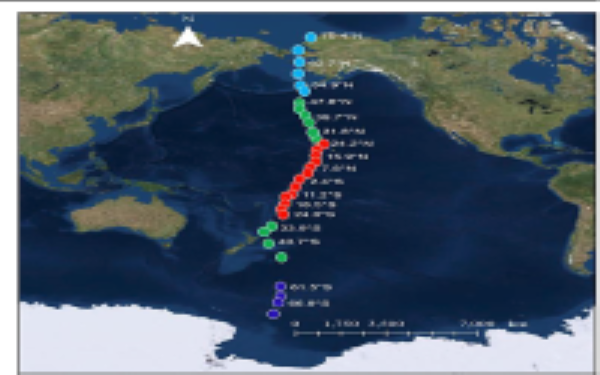Pacific Ocean Microplankton Study

Microbial ecology aims to identify mechanisms that shape their biogeography. It raises questions about our understanding of the biogeochemical cycles and the mechanisms that structure and shape microbial communities. Oceanographers attempt to discern distribution patterns among marine microbiota, and lively debates have emerged concerning the global distribution of microbes. However; establishing and interpreting biogeographical patterns is a challenge especially for microplankton despite their accounting for most of the biomass and for 98% of primary production in the ocean. Understanding how microbial community structure is related to environmental parameters such as water temperature, salinity, and dissolve oxygen is a useful step towards defining marine microbial structure and function linkages that affect global biogeochemical processes. Recent progress, primarily in studies focusing solely on the Bacteria or on the Archaea, have shown that distinguishable oceanic water bodies harbor different microbial communities, though most oceanographic studies have largely been constrained to a single domain or oceanic realm or region.
The microplankton in the Pacific Ocean, the largest microbial community of the planet, powering a majority of the carbon, nitrogen and sulfur biogeochemical cycles provides a vast yet exceptional study environment. Given a previous and unique opportunity, we collected surface water samples collected every 2 degrees latitude along a ~15,400 km Pacific Ocean transect from the Arctic to Antarctic circles. To contribute to ongoing debates concerning microbial biogeography and diversity, the CEDB performs comprehensive analyses of planktonic communities using DNA extracted from seawater samples acquired every 2 degrees of latitude. Through use of culture independent techniques such as next generation sequencing, the CEDB evaluates the microbial biogeography of the Bacteria, Eukarya and Archaea against recorded environmental parameters and submits findings to the scientific community.


